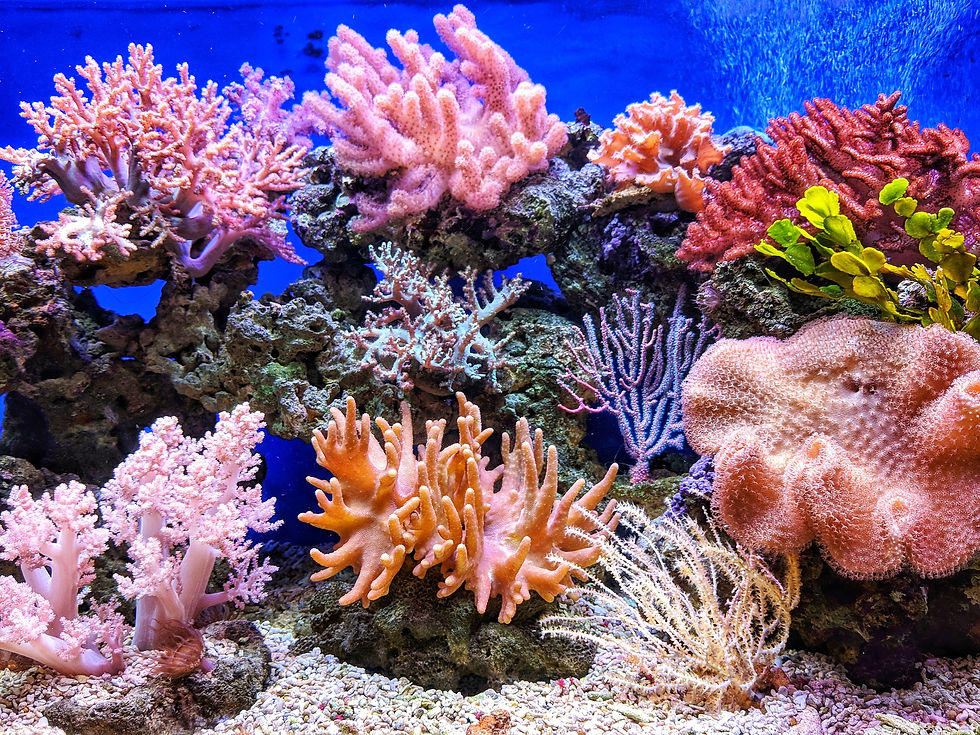Sustainable Fashion: One Man’s Trash is Another Man’s T-Shirt
- Hannah Whitfield

- Jun 30, 2021
- 3 min read
Updated: Aug 16, 2021
The ocean covers over 70% of our planet, produces 50%-80% of the oxygen we breathe and is home to 80% of life on Earth. Despite an increase in awareness of the plastic crisis and the damage that we are causing, eight million tonnes of plastic is dumped into the ocean each year.
The fashion industry especially is a huge source of marine pollution, with half a million tonnes of microfibres being put into the ocean every year from clothing alone. The fashion industry is also the second largest consumer of water worldwide.
To put this into perspective, it takes around 700 gallons of water to produce just one cotton shirt. In a bid to save our oceans and our planet, some designers are turning to plastic waste from the sea to create more sustainable fashion.
Recycled Raiments
Discarded plastic is finding its way onto catwalks and into our wardrobes, thanks to a number of fashion designers turning towards recycled ocean materials. Companies such as Aquafil, a textile manufacturer that transforms waste into sustainable materials, are partnering with brands including Gucci and Stella McCartney, a brand known for being dedicated to sustainability.
Thousands of kilograms of plastic and discarded fishing nets are recovered from the coast of Sicily each month by Heathy Seas. Then they are sent to a recycling plant in Slovenia, where Aquafil turns them into sustainable materials, such as Econyl and Seaqual, for use in the fashion industry.
Designers, such as Adidas, are also partnering with organisations like Parley for the Oceans, which raises awareness surrounding the destruction of the ocean. Their collaboration included a clothing range, made with at least 75% recycled plastic.
This growing trend comes as no surprise considering the impact of recent docuseries’ such as A Plastic Ocean and Blue Planet, some people even dubbing it “the Blue Planet effect”. These recent series have exposed the harsh reality of the damage we are doing to our oceans and highlighted how people’s everyday habits and purchase decisions are a contributing factor.
Younger generations are becoming more and more environmentally conscious, with 72% of Generation Z women saying that it is imperative for them to buy from eco-friendly brands. Now more than ever, people are holding themselves personally accountable and are looking for different ways in which they can reduce their damage to the environment.
Is it Too Late?
Despite the efforts of these select fashion designers and companies like Aquafil, Greenpeace does not believe that there will be any significant change any time soon enough. Although removing plastic from our beaches and oceans is a great step in the right direction, it does not compare to the amount of waste dumped into our oceans every minute, just as it would be impossible to recycle the volume of plastic we currently produce.
Greenpeace campaigner Louise Edge has said:
“The only real way to prevent ocean plastic from becoming a massive ecological catastrophe is to massively reduce plastic production, which, unless we act, is set to quadruple over the next few decades.”
This seems to make clear that the future of our oceans lies with big corporations. Not only should consumers shop from eco-friendly brands, but more companies should also be looking for innovative ways to integrate recycled ocean materials into their clothing, instead of producing more plastic.
Advancements in technology means that recycled fashion can be produced at a large scale and is no longer a niche area of the fashion industry, these companies have no excuse. The demand for environmentally conscious products, is clearly a driving force for many consumers.
Therefore, brands should recognise that changing their supply chain to incorporate recycled materials would not only secure their customer base and provide more sustainability in the industry, but also quite literally save our planet.



Comments